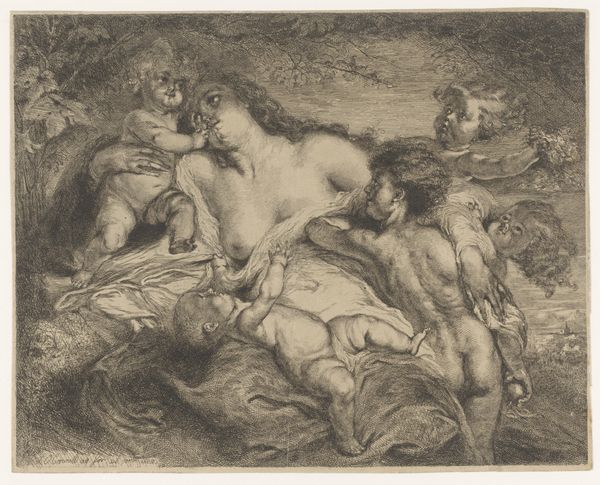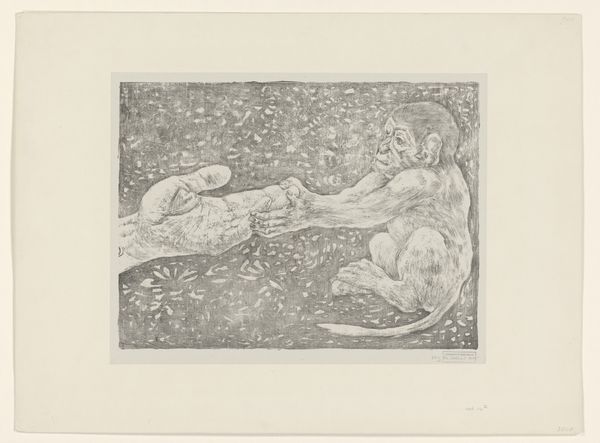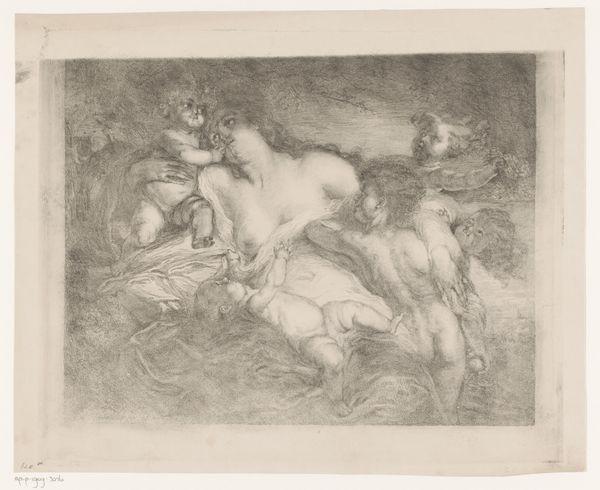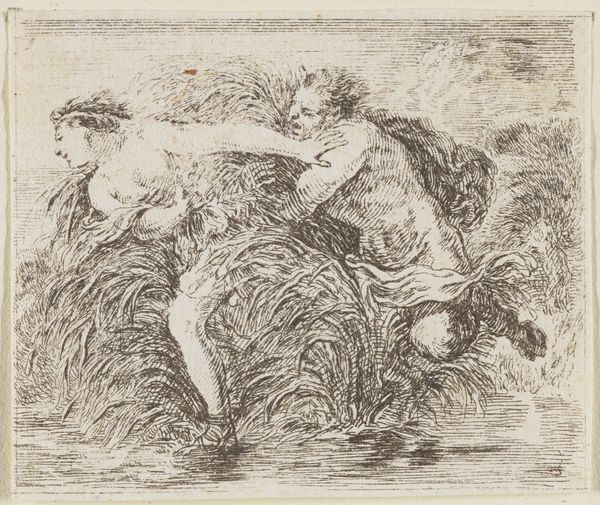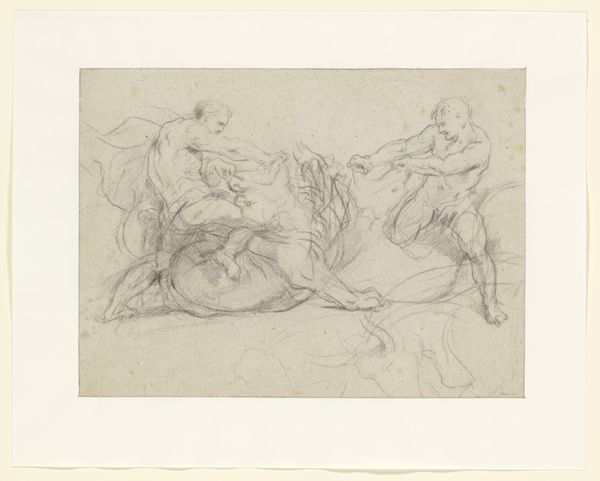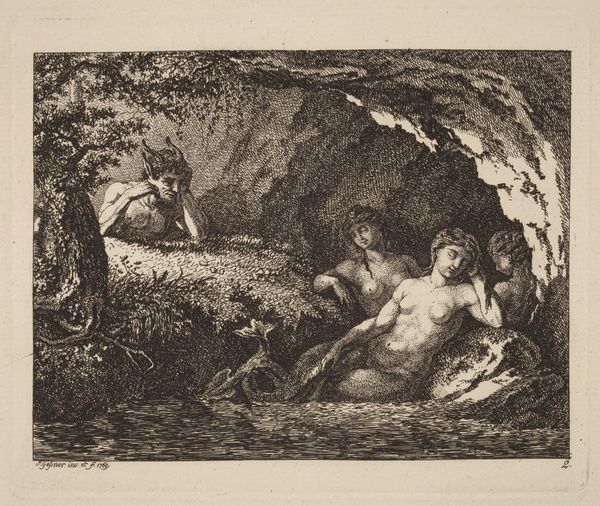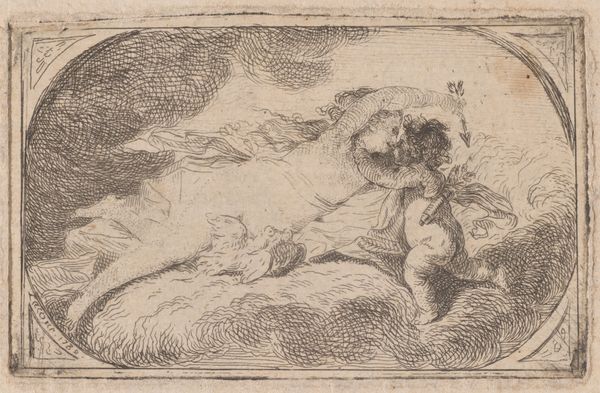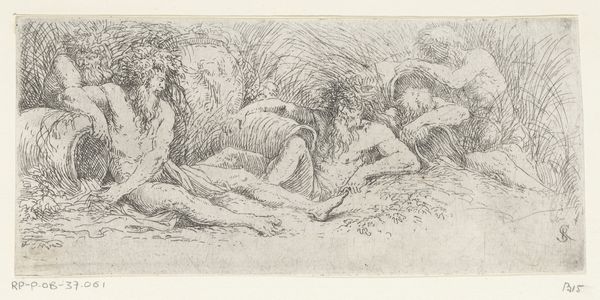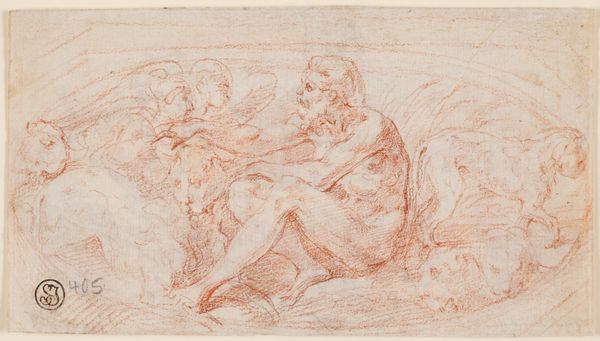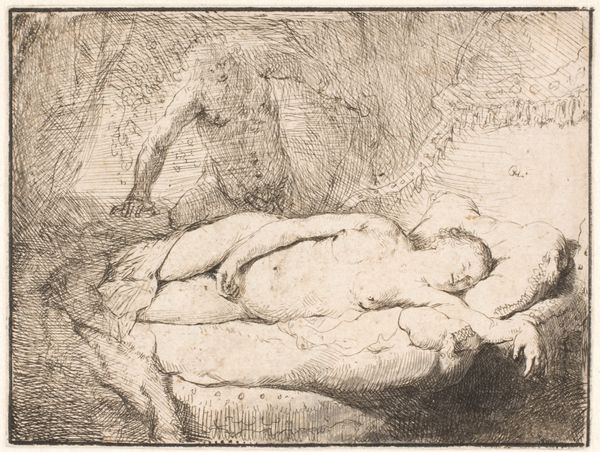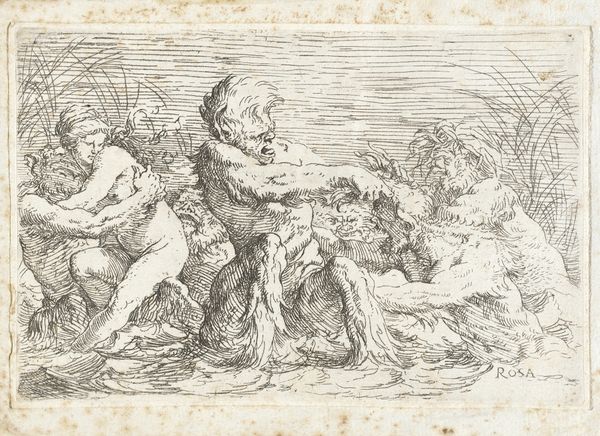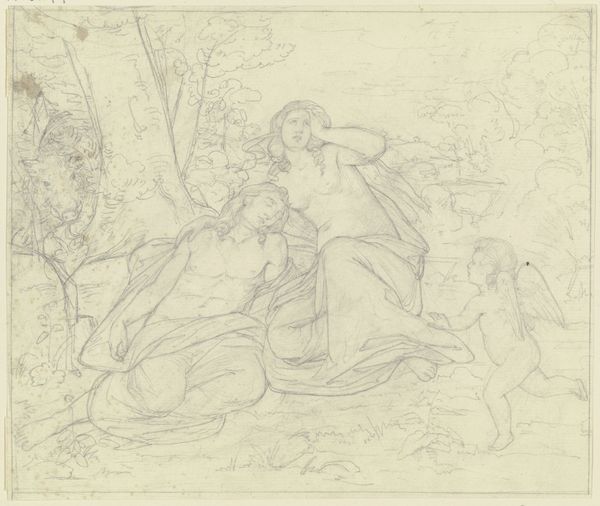
Dimensions: sheet: 5 13/16 x 8 1/4 in. (14.7 x 21 cm) image: 5 5/16 x 7 15/16 in. (13.5 x 20.2 cm)
Copyright: Public Domain
Editor: So, here we have Jean-Honoré Fragonard’s "A Young Girl Astride a Satyr," an etching made with ink, sometime between 1745 and 1806. There's something so playful about the swirling lines and the chaotic composition that gives the piece a really light, almost giddy, energy. How do you see this, especially given the overt subject matter? Curator: The lithographic tonal range here is exquisite. Notice how the structural dynamism arises directly from Fragonard’s assured command of line? It establishes depth without any explicit volumetric rendering. What sort of tension do you perceive between the background foliage and the central figuration? Editor: Well, I see a distinct separation; the figures in the circle almost exist on a different plane. Is it an intentional choice to highlight them, or is there something else happening? Curator: Precisely. The central medallion operates as a distinct, formal device. See how the dense background contrasts against the smoothness inside? The background emphasizes detail through hatching, acting almost as a frame—directing the eye to the lighter forms, creating tension within its boundaries. It isn't merely representational, it shapes the reading. Editor: Ah, so it's less about what’s depicted and more about how those compositional choices affect the experience? It certainly shifts how I initially perceived the work; I was mostly caught up in the narrative elements. Curator: Indeed. Attending to the semiotic interplay within Fragonard's chosen forms helps deconstruct the total image. He achieves the rococo aesthetic, not merely through subject, but also his rigorous formal treatment. Editor: That's really changed how I appreciate Fragonard; it's given me a new toolkit to examine the intentionality of the artwork. Thank you. Curator: You're welcome. Considering an artwork's internal logic expands interpretative potential.
Comments
No comments
Be the first to comment and join the conversation on the ultimate creative platform.
